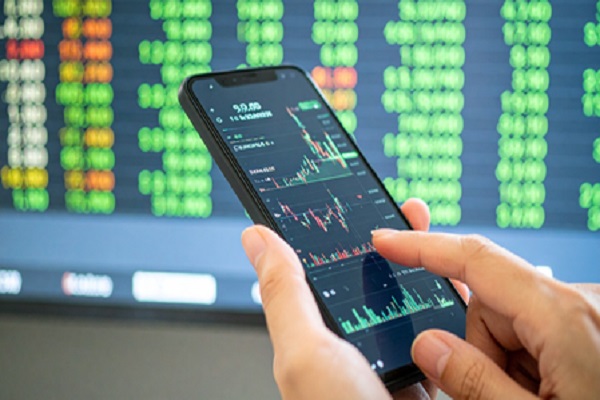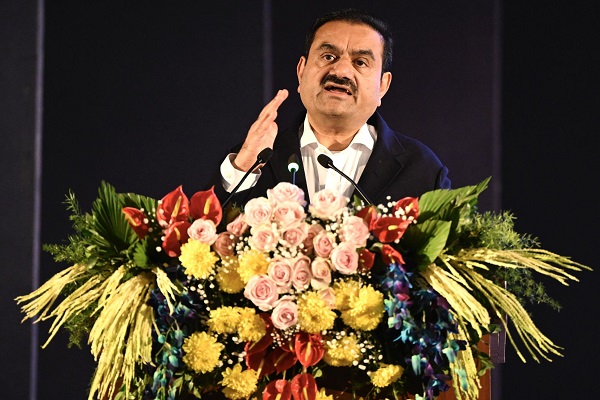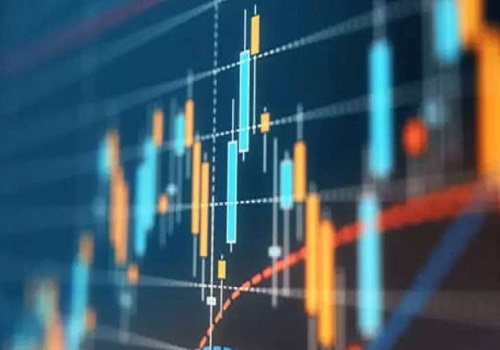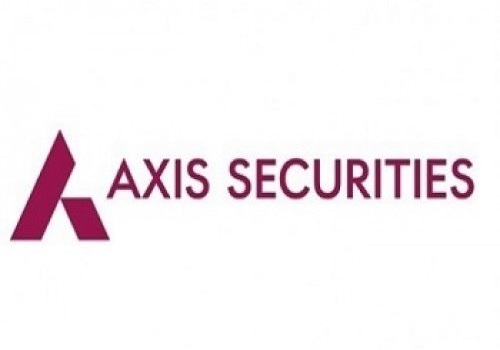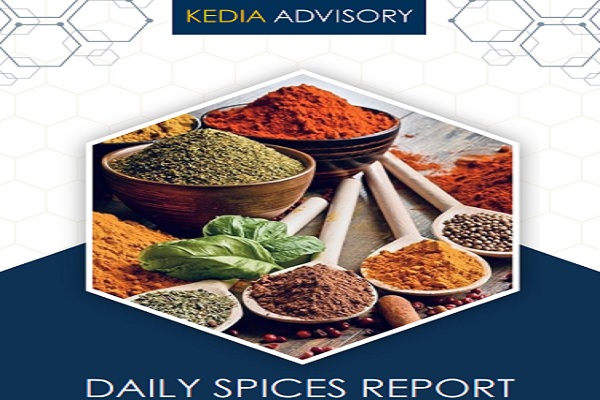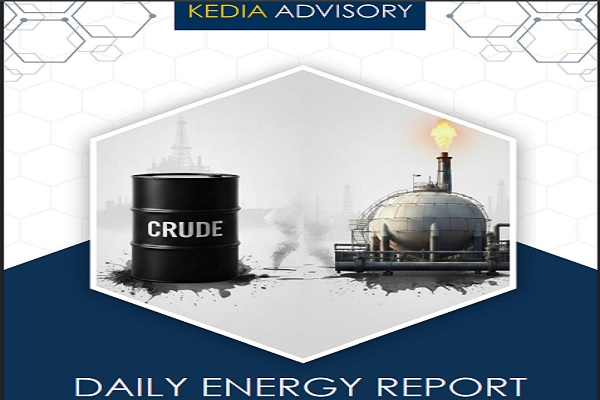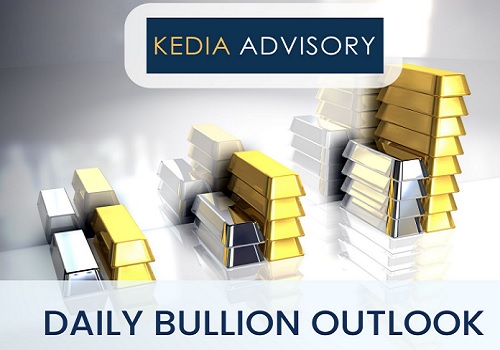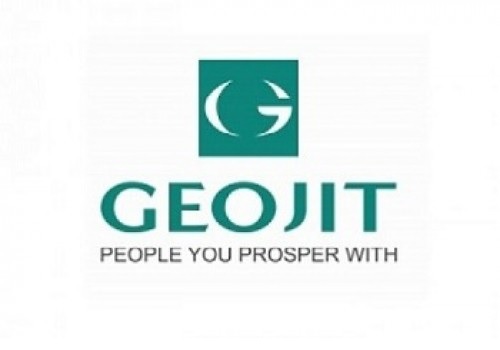Zinc trading range for the day is 265.7-269.7. - Kedia Advisory

Gold
Gold prices declined slightly by 0.14% to settle at 98,983 as traders assessed a mix of macroeconomic data and awaited the U.S. Federal Reserve’s policy decision. The Fed held interest rates steady for the fifth consecutive meeting at 4.25%–4.50%, despite pressure from political quarters, signaling a cautious stance amid moderate economic activity and sticky inflation. Two dissenting votes favoring a rate cut reflected growing internal divergence. Meanwhile, optimism over global trade tensions eased as the U.S.–EU agreement helped avert a broader conflict, and continued negotiations with China and others further supported sentiment. On the international front, gold exports from Switzerland surged 44% in June, with significant volumes moving to the U.K.—the highest since August 2019—indicating renewed investment interest. This coincided with a 2.1% rise in gold held in London vaults, reaching 8,776 metric tons, the highest since August 2023. However, demand from China, the world’s largest gold consumer, fell for the second consecutive month, with June imports dropping 36.3% from May. Despite this, gold-backed ETFs saw robust inflows of $38 billion in H1 2025—the strongest semi-annual gain since 2020—driven in part by strong Asian investor participation. Technically, the market is witnessing long liquidation, with open interest falling by 1.03% to 11,905 contracts. Gold now finds immediate support at 98,550, with a break possibly testing 98,110. Resistance is at 99,635, and a move above could push prices towards 1,00,280.
Trading Ideas:
* Gold trading range for the day is 98110-100280.
* Gold dropped after stronger-than-expected US data, with GDP growth and private employment both topping forecasts.
* The Fed held rates steady at 4.25%–4.50% for a fifth straight meeting, defying President Trump’s demands for cuts.
* US and China are continuing discussions to extend a tariff truce set to expire in two weeks, with Trump expected to make the final decision.
Silver
Silver prices fell by 0.78% on Tuesday to settle at 112,864, pressured by a stronger U.S. dollar as the dollar index climbed to 99.3—its highest since early June—ahead of the Federal Reserve’s policy announcement. Support for the dollar came from solid U.S. GDP growth of 3% in Q2 and better-than-expected ADP jobs data, suggesting a rebound in labor market momentum despite signs of cooling demand. These developments reinforced expectations that the Fed would hold rates steady for a fifth consecutive meeting. On the global trade front, sentiment was rattled by President Trump’s announcement of a 25% tariff on India effective August 1, adding pressure over its energy ties with Russia. Meanwhile, the silver market saw mixed investment trends. While European retail demand recovered from low bases, Indian retail investment remained robust, growing 7% year-over-year in H1 2025, driven by strong price expectations. Additionally, global silver Exchange-Traded Products (ETPs) saw inflows of 95 million ounces in the first half, pushing total holdings to 1.13 billion ounces—just 7% below the February 2021 record. Technically, fresh selling pressure was noted as open interest rose by 0.4% to 15,704 contracts. Silver now finds support at 112,175, with further downside possible to 111,490, while resistance is at 113,785, above which prices may test 114,710.
Trading Ideas:
* Silver trading range for the day is 111490-114710.
* Silver dropped as US dollar index climbed to 99.3, approaching its highest level since June 1.
* Strong GDP data showing the US economy grew at a 3% annualized rate in Q2.
* ADP data showed private-sector hiring rose by 104,000 in July, beating expectations, but still pointing to cooling labor demand.
Crude oil
Crude oil prices surged by 3.38% to settle at 6,176, driven by escalating geopolitical tensions and tightening global supply risks. The rally was triggered after former U.S. President Donald Trump issued a ten-day ultimatum to Russia to resolve the Ukraine conflict or face severe consequences, including imposing 100% secondary tariffs on countries continuing oil trade with Russia. This aggressive stance could severely disrupt global crude flows, especially as major trading partners may reduce or halt purchases due to compliance risks. Further pressure came after the U.S. warned China—Russia’s largest crude customer—of potential punitive tariffs, intensifying fears of a broader supply shock. However, the upside was limited by bearish inventory data. The API reported a surprise 1.5 million-barrel build in U.S. crude stocks, while official EIA data showed a much larger-than-expected inventory increase of 7.698 million barrels—the biggest in six months—versus expectations of a 2 million-barrel draw. Cushing, Oklahoma, saw a 690,000-barrel stock build. Among refined products, gasoline inventories declined by 2.725 million barrels, whereas distillates rose by 3.635 million barrels, reflecting mixed demand signals. Technically, the market showed strong momentum with a 6.64% jump in open interest to 11,940, signaling fresh long positions. Crude now finds support at 6,052 and could test 5,927 if it breaks lower, while resistance lies at 6,243 and 6,309 on further gains.
Trading Ideas:
* Crudeoil trading range for the day is 5927-6309.
* Crude oil rose on supply concerns from US-Russia tensions
* Trump vows sanctions unless Russia makes progress on peace deal
* China warned of tariffs if it continues buying Russian oil
Natural gas
Natural gas prices declined by 1.61% to settle at 268.9, pressured by expectations of reduced cooling demand and robust production levels. Output in the Lower 48 U.S. states averaged 107.5 billion cubic feet per day (bcfd) in July so far, surpassing June’s record of 106.4 bcfd, according to LSEG. Meanwhile, gas demand, including exports, is projected to dip from 113 bcfd this week to 108 bcfd next week, as weather forecasts indicate milder conditions ahead. Cooling degree days over the next two weeks were revised down to 235 from 239, further reducing the immediate demand outlook. Storage data showed U.S. utilities injected 23 billion cubic feet into storage for the week ending July 18, bringing total stocks to 3.075 trillion cubic feet. While the injection was slightly below expectations of 28 bcf, it aligns with typical summer trends. Inventories remain 4.7% lower than the same period last year, but 5.9% above the five-year average, reflecting healthy supply levels despite seasonal demand. In its latest outlook, the U.S. Energy Information Administration (EIA) projected record-high production and consumption in 2025. Dry gas output is forecast to reach 105.9 bcfd, while consumption is expected to rise to 91.3 bcfd. Technically, the market saw fresh selling pressure with open interest jumping by 19.54% to 38,262. Support is now at 263.2, with further downside toward 257.4, while resistance is at 277, above which prices may test 285.
Trading Ideas:
* Naturalgas trading range for the day is 257.4-285.
* Natural gas dropped amid higher production and forecasts for milder weather
* LSEG said average gas output in the Lower 48 has risen to 107.5 billion cubic feet per day so far in July.
* LSEG forecast average gas demand in the Lower 48, falling from 113 bcfd this week to 108 bcfd next week.
Copper
Copper prices edged lower by 0.22% to settle at 897.6 amid investor caution surrounding geopolitical tensions and trade policy uncertainty. Markets remained on edge ahead of the August 1 deadline when the U.S. plans to impose a 50% tariff on copper imports from key trade partners, raising fears of trade disruptions. Chile, the world’s top copper producer, has requested exemptions, which, if denied, could tighten global supply chains. Supply data showed mixed trends: LME copper inventories rose to a six-week high at 128,475 mt, while SHFE inventories in China dropped by 13.17% to 73,423 mt, a seven-month low. COMEX inventories surged to 248,635 mt, marking the highest level in over seven years. Meanwhile, global copper stocks remain stable at 11,616 mt. On the production front, Chile’s Codelco and Antofagasta both reported strong H1 2025 output growth, up 9% and 11% respectively. However, supply could tighten ahead as Glencore plans to shut down its Australian mines and temporarily halt operations in Africa, potentially removing 400,000 tonnes—around 12% of global output. The global refined copper market showed a 97,000 mt surplus in May, reversing April’s 80,000 mt deficit. China’s copper imports rose 8.7% in June but remain lower year-to-date.Technically, the market is undergoing long liquidation, with open interest falling by 1.89% to 7,274. Copper finds support at 895.6 and 893.4, while resistance lies at 900.4 and 903.
Trading Ideas:
* Copper trading range for the day is 893.4-903.
* Copper prices fell as traders await clarity on U.S.-China tariff extension
* Chile requests U.S. tariff exemption amid fears of trade disruptions
* LME inventories continued to accumulate, with the inventory level reaching hitting a one-and-a-half-month high.
Zinc
Zinc prices slipped by 0.28% to settle at 267.55, as traders awaited clarity on a potential trade deal between the U.S. and China. While sentiment was cautious, downside remained limited due to China’s supportive measures aimed at stabilizing growth in the machinery, automotive, and electrical equipment sectors—major consumers of zinc. However, zinc inventories in warehouses tracked by the Shanghai Futures Exchange rose by 8.8% from last Friday, indicating short-term supply build-up. On the supply side, tightening conditions are beginning to emerge. Chinese smelters are under pressure to cut output as production capacity surpasses current demand levels, especially with South China smelters disrupted by heavy rains. Adding to global concerns, zinc mined output from Teck Resources’ Red Dog Mine—the world’s largest—dropped 20% year-on-year in Q1 2025. Globally, the zinc market flipped into a deficit of 44,100 tonnes in May from a surplus of 17,300 tonnes in April, according to the ILZSG. However, for the first five months of 2025, a cumulative surplus of 88,000 tonnes was recorded—still well below the 214,000-tonne surplus in the same period last year. In China, June’s refined zinc production rose 6% month-on-month and 7% year-on-year, driven by post-maintenance recovery in major provinces despite some localized disruptions. Technically, the market is experiencing long liquidation, with open interest down by 2.64% to 3,720. Zinc finds support at 266.7, with further downside at 265.7, while resistance lies at 268.7 and 269.7.
Trading Ideas:
* Zinc trading range for the day is 265.7-269.7.
* Zinc dropped as investors are focused on a potential trade deal with the China.
* Zinc inventories in warehouses monitored by the Shanghai Futures Exchange rose 8.8% from last Friday.
* Zinc supply is tightening as Chinese smelters face pressure to cut production due to capacity outpacing demand.
Aluminium
Aluminium prices edged higher by 0.18% to settle at 253.85, as participants remained focused on developments in U.S.-China trade talks and Beijing’s latest economic stimulus pledges. Sentiment was buoyed by China's commitment to stabilize industrial growth, including a massive CNY 1.2 trillion hydroelectric dam project that signals increased infrastructure investment. This move is expected to support long-term demand for industrial metals like aluminium. However, upside remained modest amid weak international demand and increased supply signals from key exporting countries. China’s aluminium production in June 2025 stood at 3.81 million metric tons, up 3.4% YoY, while cumulative production for the first six months rose by 3.3% to 22.38 million metric tons. However, production in June fell 3.23% month-on-month. Domestic operating capacity is expected to remain high in July. On the export front, China shipped 489,000 tonnes of aluminium in June, down from 547,000 tonnes in May. Meanwhile, Japanese buyers agreed to a sharply lower premium of $108 per metric ton for Q3 aluminium shipments—down 41% from the previous quarter—highlighting weak regional demand and abundant supply. Inventories at Japan’s major ports also dropped 4.3% to 316,700 metric tons in June. In contrast, SHFE aluminium stocks rose by 6.4% from last Friday, adding some weight to short-term supply pressure. Technically, the market is under fresh buying, with open interest up 2.18% to 4,695. Aluminium finds support at 253.3 and 252.7, while resistance lies at 254.7 and 255.5.
Trading Ideas:
* Aluminium trading range for the day is 252.7-255.5.
* Aluminium gains as participants in Chinese metals markets closely monitored progress in U.S.-China trade discussions.
* The outlook of lower supply and improved demand from China also supported prices.
* Supply for European factories is already limited due to sanctions of major producer Russia.
Turmeric
Turmeric prices ended marginally higher by 0.06% at 12,980, recovering slightly on short covering after recent declines driven by expectations of increased acreage due to favorable monsoon conditions. Turmeric arrivals rose to 13,660 quintals from 11,940 quintals in the previous session, reflecting a moderate improvement in supply. The ongoing dry weather has supported timely sowing, and early estimates suggest a 15–20% rise in acreage as farmers shift to turmeric from other less profitable crops. For the 2024–25 season, the area under turmeric cultivation is recorded at 3.30 lakh hectares—up 10% from last year. However, this acreage increase is unlikely to translate fully into higher output, as untimely rainfall during crop development may reduce productivity. In 2023–24, India produced 10.75 lakh tonnes of turmeric, but current year yields are expected to be 10–15% lower, particularly in regions like Nanded where small rhizomes and rot issues have been reported. Despite nearing the end of the season, market activity remains strong, especially in Duggirala, where new crop arrivals are fetching better prices than older stocks due to higher quality. Around 50–55% of the new crop has already been traded, and arrivals are expected to continue through June. Turmeric exports during April–May 2025 rose by 8.37% YoY to 34,162.28 tonnes, with May exports up 10.28% YoY and 28.41% MoM, reflecting solid overseas demand. Technically, the market is in short covering mode with open interest down 1.33% to 16,680. Support lies at 12,868 and 12,754, while resistance is seen at 13,058 and 13,134.
Trading Ideas:
* Turmeric trading range for the day is 12754-13134.
* Turmeric recovered on short covering after prices dropped due to expected increase in acreage.
* Turmeric acreage is expected to increase by 15-20% this season, supported by low competitive crop prices.
* In April 2025 around 14,956.80 tonnes were exported as against 14,109.10 tonnes in April 2024 showing a rise of 6%.
* In Nizamabad, a major spot market, the price ended at 13896.4 Rupees dropped by -0.09 percent.
Jeera
Jeera prices gained 0.96% to settle at 18,990, driven by short covering after recent declines triggered by subdued domestic and export demand following the conclusion of the retail season. Despite the recent uptick, overall market sentiment remains bearish due to weak overseas demand and adequate domestic supplies. Traders note that with foreign buyers largely inactive and retail demand tapering off, the current export business is being fulfilled from existing inventories. Reports indicate that farmers still hold about 20 lakh bags of cumin, while only 3–4 lakh bags are likely to be traded by the end of the season. Although the geopolitical situation in other major producing countries like Syria, Turkey, and Afghanistan has reduced their output, it hasn't yet translated into stronger demand for Indian jeera. Production this year is estimated at 90–92 lakh bags, slightly lower than last year’s 1.10 crore bags, with Gujarat and Rajasthan expected to contribute 42–45 lakh and 48–50 lakh bags, respectively. Export performance has been mixed. Jeera exports during April–May 2025 dropped sharply by 27.07% to 42,925.74 tonnes compared to the same period in 2024. However, monthly data shows a 17.68% rise in May 2025 over April 2025, and an 11.26% increase YoY, indicating some revival in overseas buying interest. Technically, the market is in short covering mode, with a 1.03% decline in open interest to 5,481. Jeera now finds support at 18,840 and 18,690, while resistance is seen at 19,100 and 19,210.
Trading Ideas:
* Jeera trading range for the day is 18690-19210.
* Jeera gains on short covering after prices dropped due to weak domestic post retail season.
* Only 3-4 lakh bags are expected to be traded by the end of the season, leaving a carry-forward stock of about 16 lakh bags
* Total arrivals witnessed a marginal increase to 12,000 bags (55 kg each) as against 11,800 bags on the previous day.
* In Unjha, a major spot market, the price ended at 19531.9 Rupees dropped by -0.26 percent.
Views express by all participants are for information & academic purpose only. Kindly read disclaimer before referring below views



